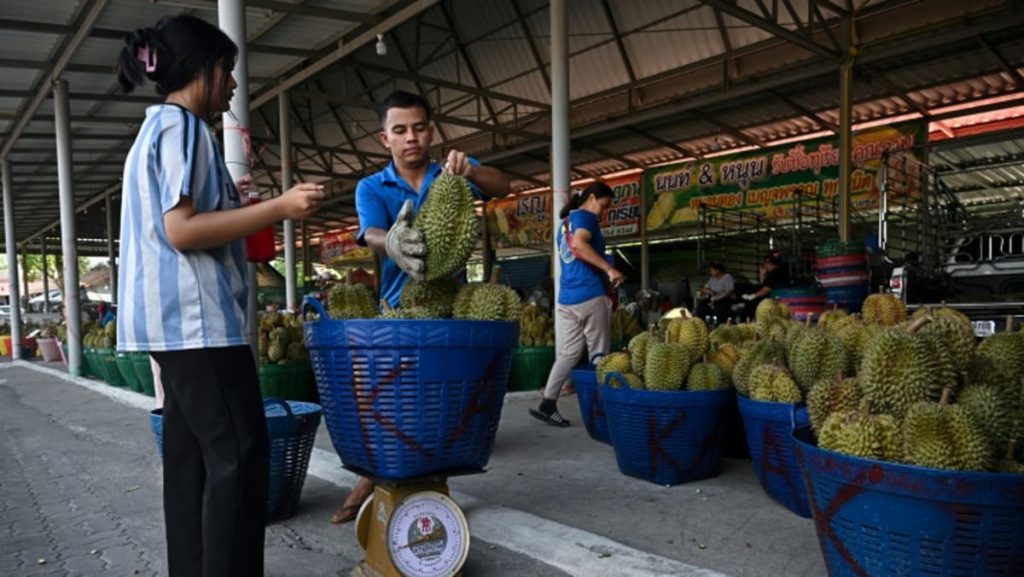uits” is prized for its unique taste and texture, beloved by some and reviled by others for its overpowering smell. The labor-intensive process of harvesting durian requires skilled workers who are willing to endure the intense physical demands of working high in the trees under the hot sun.
Durian cultivation is a major industry in Chanthaburi, a province in eastern Thailand known for its rich soil and ideal climate for growing the fruit. The harvest season typically runs from April to June, when the trees are laden with ripe durians ready to be picked and sent to markets both domestically and internationally. The demand for durian continues to grow, with consumers in countries such as China and Malaysia willing to pay top dollar for this exotic fruit.
Despite its popularity, durian farming poses numerous challenges for growers and laborers alike. The trees can grow up to 40 meters tall, requiring workers to climb precarious heights to pick the fruit by hand. In addition to the physical risks, durian farming is also labor-intensive, with each fruit needing to be carefully handled and transported to avoid damage. The spiky outer shell of the durian can cause painful injuries if not handled properly, adding an extra layer of difficulty to the already arduous work.
In recent years, technology has started to play a role in durian farming, with drones being used to monitor and assess the health of durian trees from above. This allows growers to detect issues such as disease or pest infestations early on, helping to improve the overall quality and yield of the harvest. However, traditional methods of harvesting and processing durian still prevail in many parts of Chanthaburi, with skilled workers relying on their expertise and experience to ensure a successful crop.
The durian industry in Chanthaburi not only provides economic opportunities for local farmers and laborers but also contributes to the cultural heritage of the region. The unique flavor and aroma of the durian have made it a symbol of Thai cuisine, with the fruit being used in a variety of dishes and desserts. The annual Chanthaburi Durian Festival showcases the best durians from the region, attracting tourists and food enthusiasts who come to sample the different varieties and learn more about the fruit.
As demand for durian continues to rise, the industry faces challenges related to sustainability and environmental impact. Deforestation and monoculture farming practices have raised concerns about the long-term health of durian trees and the surrounding ecosystem. Farmers and researchers are exploring ways to promote more sustainable farming methods, such as agroforestry and organic farming, to ensure the future viability of the durian industry in Chanthaburi. By balancing economic growth with environmental stewardship, the durian industry can continue to thrive and provide a source of income for generations to come.















